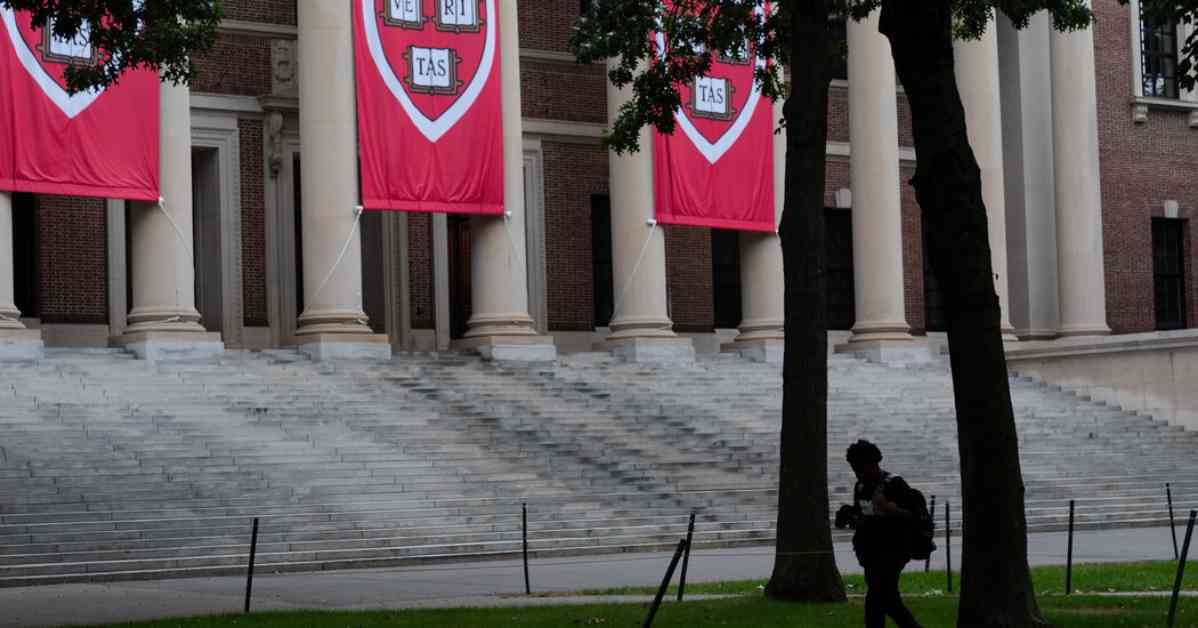Harvard University Faces Decline in Black Student Enrollment Following Affirmative Action Ban
In a surprising turn of events, the impact of a Supreme Court decision curtailing race-based admissions has been felt at Harvard University, with a noticeable decline in Black student enrollment following the end of affirmative action policies. While some highly selective schools like Harvard have managed to maintain a level of diversity in their student body, others have seen significant changes in their demographics.
The aftermath of the Supreme Court ruling that effectively ended affirmative action in college admissions has raised concerns about the future of diversity on college campuses. Harvard University, known for its rigorous admissions process and commitment to inclusivity, has released data showing a decline in the proportion of Black first-year students enrolled in the current academic year. The percentage of Black students has decreased from 18% to 14%, a significant drop that has raised questions about the impact of the ban on race-conscious admissions.
While the decline in Black student enrollment at Harvard is concerning, the university has reported that the share of Asian American students has remained consistent at 37%. Hispanic enrollment, on the other hand, has seen an increase from 14% to 16%. However, what is particularly noteworthy is the doubling of the percentage of students who did not disclose their race or ethnicity on their applications, rising from 4% to 8%. This trend raises questions about the transparency and inclusivity of the admissions process at Harvard.
Impact of the Affirmative Action Ban on Black Student Enrollment
The decline in Black student enrollment at Harvard University post-affirmative action ban has sparked discussions about the challenges faced by minority students in higher education. While some experts predicted that elite schools like Harvard would be able to maintain their Black enrollment due to the high acceptance rates of admitted students, the reality has proven to be more complex. The decrease in Black student representation at Harvard highlights the ongoing disparities in access to higher education for marginalized communities.
Admissions experts have noted that the most coveted schools, including Harvard, Yale, and Princeton, have been able to maintain their Black enrollment to some extent. However, the overall decline in Black student enrollment at elite institutions raises concerns about the long-term impact of the affirmative action ban on diversity and inclusion in higher education. The need for proactive measures to address these disparities and promote equity in admissions processes has become more urgent than ever.
Challenges and Opportunities for Increasing Diversity in Higher Education
The decline in Black student enrollment at Harvard University serves as a reminder of the challenges faced in promoting diversity and inclusion in higher education. While efforts have been made to create more equitable admissions processes, the end of affirmative action has highlighted the need for innovative solutions to address systemic barriers to access for underrepresented students. Initiatives that focus on holistic admissions, financial aid, and support services for marginalized communities are crucial in ensuring a more inclusive and diverse student body.
Despite the challenges posed by the affirmative action ban, there are opportunities to enhance diversity in higher education through targeted interventions and partnerships with community organizations. By actively recruiting and supporting students from underrepresented backgrounds, institutions like Harvard can create a more inclusive and equitable learning environment. Collaborative efforts between universities, government agencies, and non-profit organizations are key to addressing the root causes of disparities in access to higher education and promoting social mobility for all students.
In conclusion, the decline in Black student enrollment at Harvard University following the end of affirmative action policies underscores the need for continued efforts to promote diversity and inclusion in higher education. While the challenges are significant, there are opportunities to enhance access and equity through targeted interventions and partnerships with community stakeholders. By prioritizing diversity in admissions and supporting students from underrepresented backgrounds, institutions like Harvard can create a more inclusive learning environment that benefits all members of the community.
